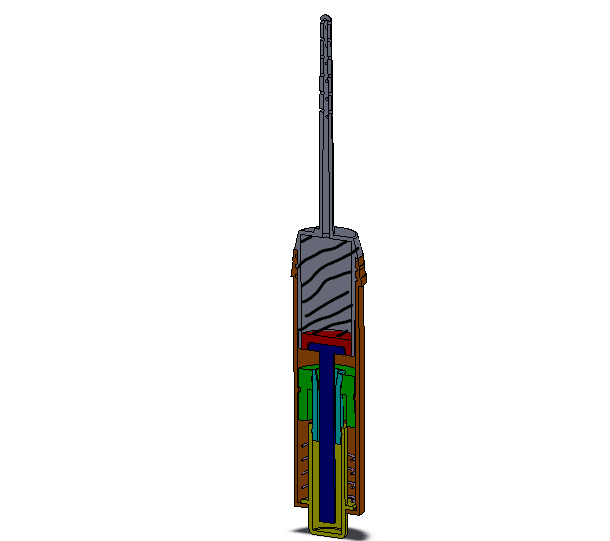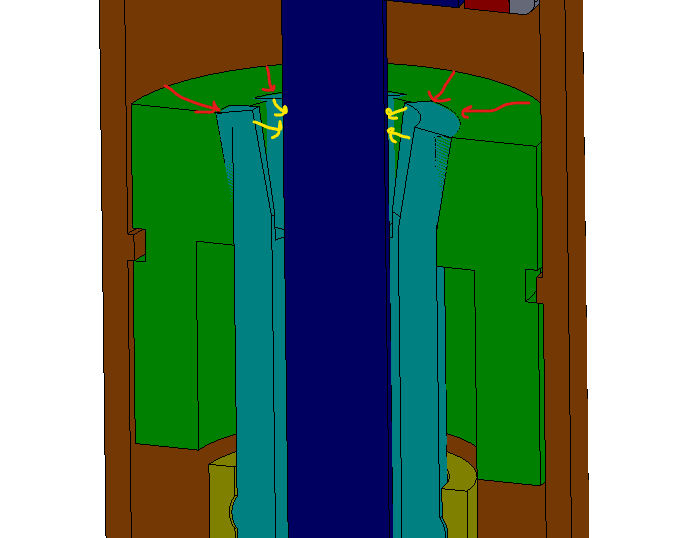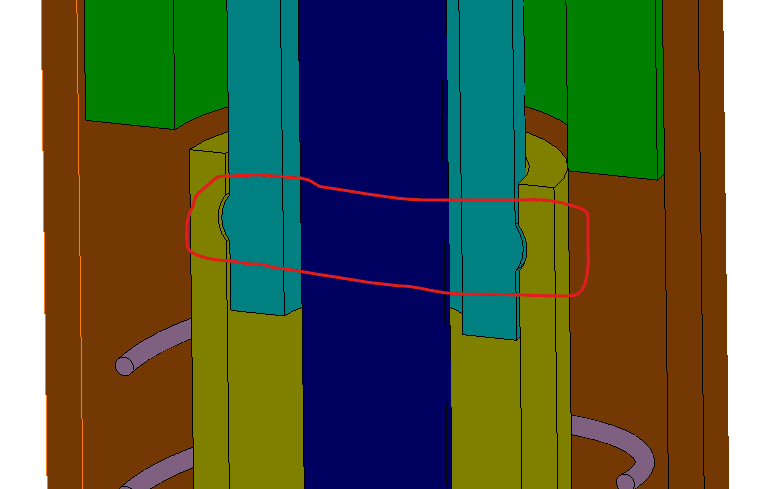U Offor
Mechanical
- May 18, 2018
- 20
Hello all,
I am trying to make a pen-like product that moves out fluid from its tip for some special chores, but I am having issues about the motion of the clutch. The picture you see is a sectioned concept because my thought isn't fully fleshed out.

Legend: Black stripes - fluid, Yellow - Button, Orange - Body, Pink - Spring, Teal - Clutch, Green - Clutch ring, Blue - Plunger, Red - Cap, Grey - Cartridge
Goal: When I push the button once, the plunger pushes up the red cap, which pushes up the fluid in the cartridge. As more liquid is expended, the red cap moves up until it reaches the top, when there's no liquid. Each time the button is pushed, I want the plunger to move and stop in accordance to the level of fluid left in the cartridge. For example, if the liquid is halfway, the plunger will be more upward.

I have a clutch system where the clutch ring is press fitted inside and a clutch has a tight fit against the clutch ring, to force the clutch to hold on to the plunger as it moves upward. This way, the plunger can move up then stay still without any external force acted on it (the button being pressed).

Main problem for me: After a certain level of fluid is gone but fluid still remains, the button won't be able to touch the plunger no matter how much I press the button. I tried introducing a small connection between the button and the clutch, so the plunger can still move even if the button doesn't have contact with it, but that introduces more problems.

You may notice more problems but the bottom line question is: will this mechanism work? If so, how can I resolve this main issue and if not, what other mechanism(s) will work? I'm not looking for specific numbers, but just needed to be point in the right direction (mechanism choice) to use.
I appreciate any and all responses!
I am trying to make a pen-like product that moves out fluid from its tip for some special chores, but I am having issues about the motion of the clutch. The picture you see is a sectioned concept because my thought isn't fully fleshed out.

Legend: Black stripes - fluid, Yellow - Button, Orange - Body, Pink - Spring, Teal - Clutch, Green - Clutch ring, Blue - Plunger, Red - Cap, Grey - Cartridge
Goal: When I push the button once, the plunger pushes up the red cap, which pushes up the fluid in the cartridge. As more liquid is expended, the red cap moves up until it reaches the top, when there's no liquid. Each time the button is pushed, I want the plunger to move and stop in accordance to the level of fluid left in the cartridge. For example, if the liquid is halfway, the plunger will be more upward.

I have a clutch system where the clutch ring is press fitted inside and a clutch has a tight fit against the clutch ring, to force the clutch to hold on to the plunger as it moves upward. This way, the plunger can move up then stay still without any external force acted on it (the button being pressed).

Main problem for me: After a certain level of fluid is gone but fluid still remains, the button won't be able to touch the plunger no matter how much I press the button. I tried introducing a small connection between the button and the clutch, so the plunger can still move even if the button doesn't have contact with it, but that introduces more problems.

You may notice more problems but the bottom line question is: will this mechanism work? If so, how can I resolve this main issue and if not, what other mechanism(s) will work? I'm not looking for specific numbers, but just needed to be point in the right direction (mechanism choice) to use.
I appreciate any and all responses!
